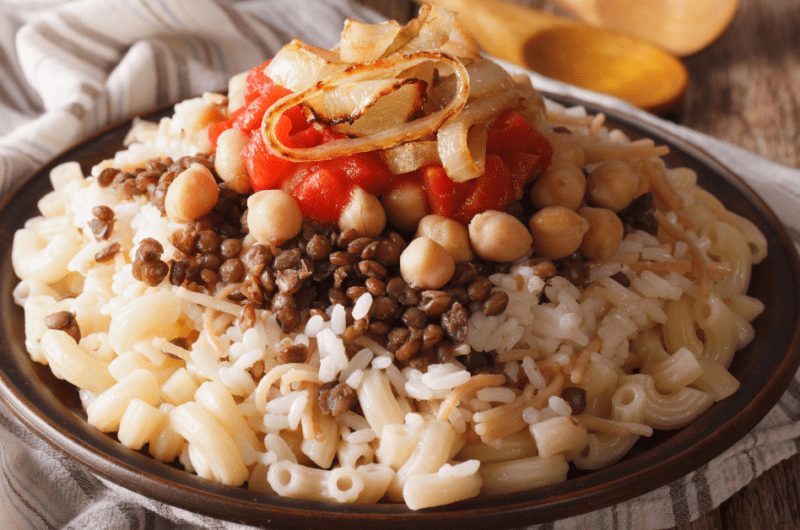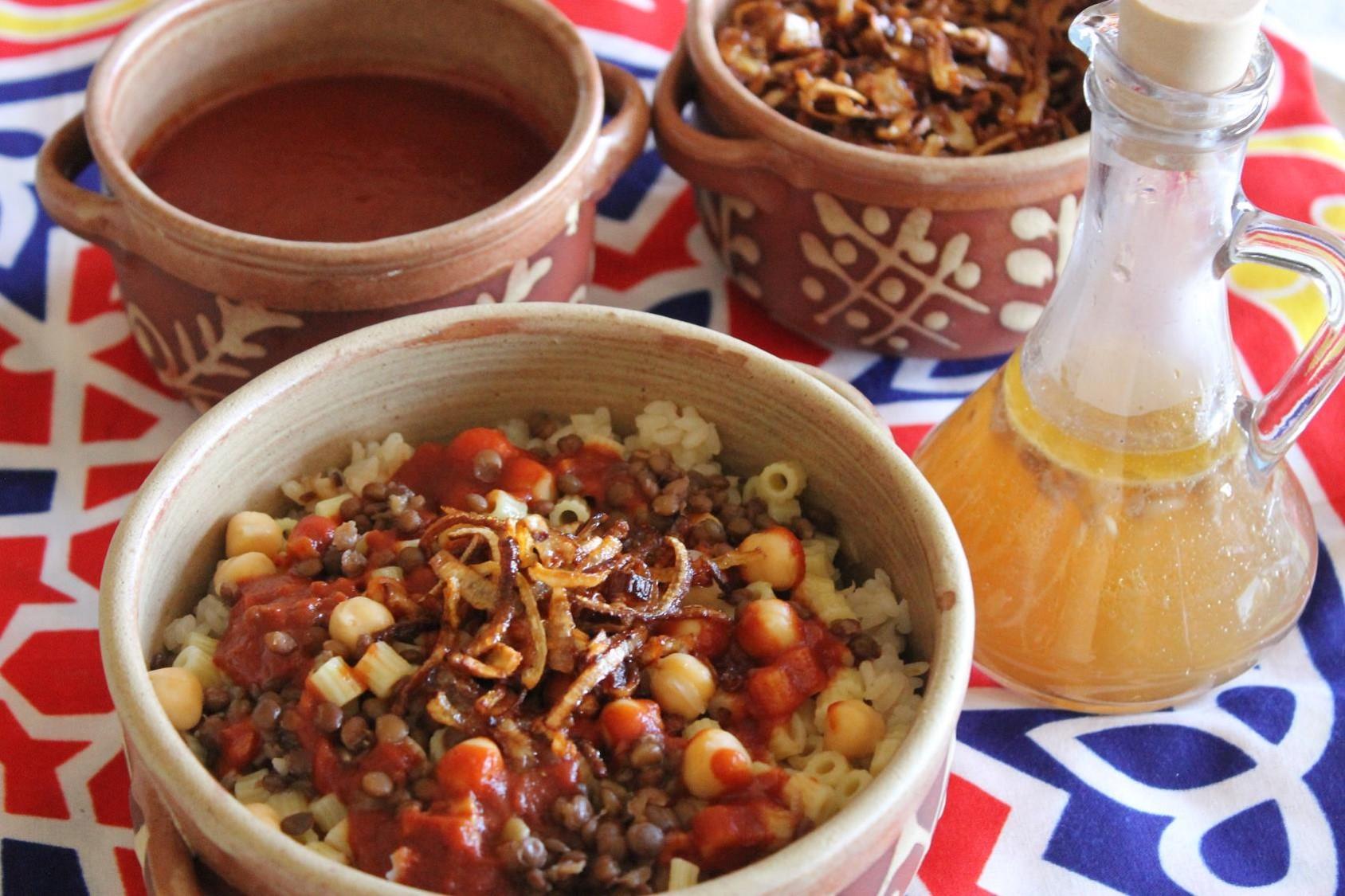Rice, pasta, lentils, and chickpeas – koshari is one of the many Egyptian dishes that raise tourists’ eyebrows in disbelief when they first lay eyes on it. Soon after, however, this surprised and doubtful expression is replaced with one of delight along with a satisfied “Mmmmm!” sound, and with good reason.
Nobody can pinpoint exactly why the strange mix of ingredients in koshari go together so harmoniously. Perhaps the perfectly spiced tomato sauce binds them together, or maybe the carbohydrate-legume combination makes it both filling and tasty at the same time.
Koshari is the only dish in Egypt that offers a special exception for when you feel like you could use just a little bit more – when you’re not hungry enough for a second serving, but not full enough just yet. In those instances, a patron would walk up to the koshari vendor and ask for a kemala, which is essentially an extra few spoonfuls to hit the spot.
Despite the fact that this vegetarian meal is often considered Egypt’s national dish, it is not actually Egyptian in origin. The dish originated almost 5,000 kilometers away in India and was referred to as khichri (or khichdi) in Hindi. Khichri is a one-pot rice and lentil dish associated with good fortune and prosperity.
It is believed that the dish made its long journey from India when Indians accompanied British soldiers to Egypt in the early 1900s following the first world war. Some accounts believe that the pasta added to the dish was influenced by a minority of Italians who lived in Egypt at the time.
Afterwards, Egyptians made the final tweaks to the recipe by adding the rest of the ingredients, including fried onion, chickpeas, cumin, paprika, and vinegar. The rest, as they say, is history.
With a history as rich as its flavor, koshari can easily be described as a melting pot of different cultures and cuisines. Each added carbohydrate or spice contributed to making it the delicious comfort food that it is today.
Although most Egyptians would argue that koshari is at its most delicious when made by an experienced street vendor, it is very easy to make at home and its ingredients are easy to assemble regardless of where you reside.
If this article brought upon a koshari craving that cannot be silenced, you’re in luck; just follow the below recipe offered by the Minnie’s Taste of Mediterranean Delight Cookbook and you can enjoy a filling plate of koshari in no time.
Koshari Recipe (serves 6-8 people):

Ingredients:
– 2 cups medium-grain white rice
– 1 cup green lentils
– 1 cup small pasta (preferably ditalini)
– 1 can of chickpeas
– 2 white or brown onions, sliced into rings
– ¼ cup oil
– pinch of salt, pepper, and cumin
– 3 cups water
Sauce:
– 2 white onions, finely diced
– 1 green capsicum, diced
– 6 cloves garlic, diced
– 4 large tomatoes, diced
– 2 ½ tbsp tomato paste
– ½ cup vinegar
– 1 cup water
– 1 tbsp of oil
– pinch of salt, pepper, paprika, and cumin
Directions:
1. Make the sauce by mixing ingredients in a pot. Bring to a boil on low heat for 15 minutes. Continue on to the next steps while the sauce is cooking.
2. Rinse and boil the lentils in 3 cups of water and ½ tsp of cumin for five minutes. Drain and rinse with cold water.
3. Sprinkle sliced onions with flour and deep until dark brown. Place them on kitchen paper and set aside.
4. Boil the pasta and drain. Set aside.
5. In a large pot, add the oil, lentils, rinsed rice, and a pinch of salt, pepper, and cumin. Add 3 cups of boiled water to the pot. Allow it to boil for two minutes. Cover and simmer for 15 minutes on low heat.
6. Wash and drain the chickpeas then put in a frying pan for one minute on high heat. Add ½ tbsp of butter, a pinch of salt, pepper, and paprika. Stir for one minute, and set aside.
7. Serve the rice and lentils onto a large plate.
8. Rinse the pasta with hot water, and drain. Pour the pasta and chickpeas on top of the lentils and rice on the plate.
9. Garnish with the fried onions and paprika powder.
10. Serve hot with a drizzle of sauce on top, and the rest of the sauce on the side.
Subscribe to the Egyptian Streets’ weekly newsletter! Catch up on the latest news, arts & culture headlines, exclusive features and more stories that matter, delivered straight to your inbox by clicking here.







Comments (15)
[…] The history of Koshari is as rich as its taste […]
[…] المصدر by [author_name] كما تَجْدَرُ الأشارة بأن الموضوع الأصلي قد […]